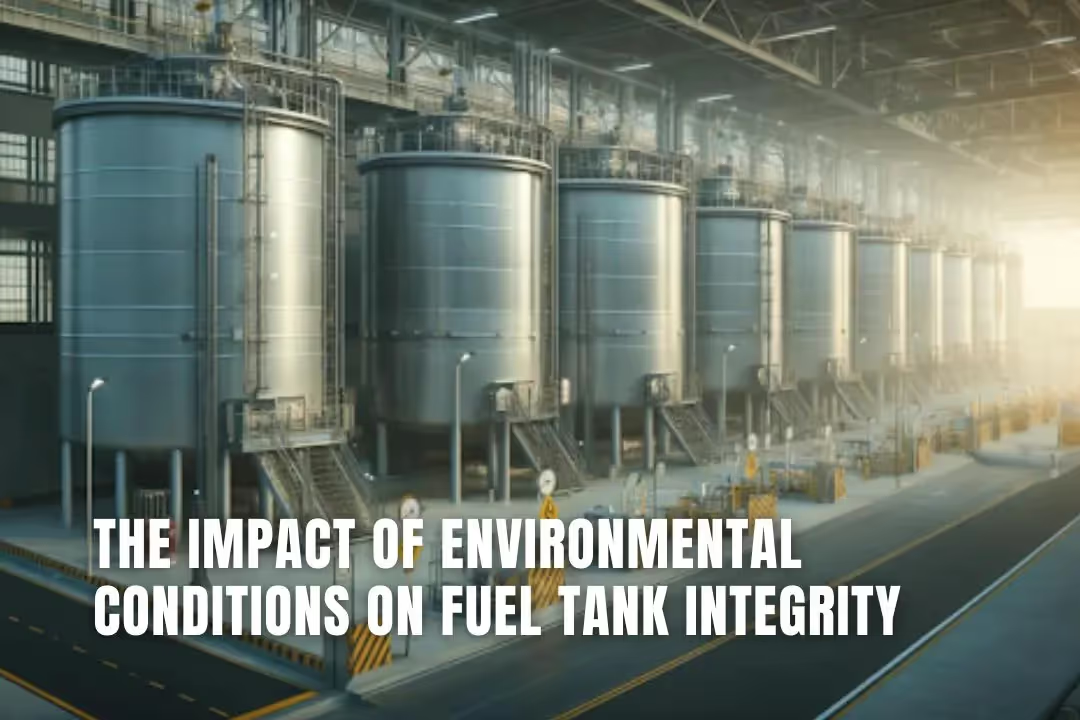
The integrity of fuel tanks is a critical concern for industries reliant on large-scale fuel storage. These tanks serve as crucial nodes in the network of energy distribution, holding the lifeblood of daily operations—fuel. Yet, their robustness is persistently tested by environmental conditions that can affect their lifespan and safety.
An in-depth understanding of these environmental impacts is not just beneficial—it is a necessity for maintaining the operational integrity of these tanks.
Among the environmental factors, corrosion stands as a formidable adversary to fuel tanks. It is a relentless force that can silently compromise the structural fortitude of tanks, leading to leakage, fuel contamination, and the risk of catastrophic failure.
Corrosion is particularly aggressive when moisture meets metal, a common scenario in outdoor storage tanks. Add to this the fluctuating temperatures that accompany seasonal changes, and you have a recipe for stress fractures and weakened welds.
The cyclic expansion and contraction of tank materials can cause wear over time, necessitating the use of materials and designs that can withstand these environmental vagaries.
The sun's ultraviolet (UV) rays pose yet another environmental challenge, as they can degrade the protective coatings on tanks, leading to material fatigue and embrittlement. This is especially true for tanks with external insulation or those made from composite materials.
On the other hand, tanks are also at the mercy of environmental debris—sand, dust, and even incidental contact with foliage or detritus can erode surfaces, damaging protective layers and expediting the corrosion process.
Proactive measures, such as the application of UV-resistant paints and the installation of physical barriers, can provide fuel tanks with the necessary armour against these relentless natural elements.
Advancements in material science have ushered in a new era of fuel tank design. Modern tanks are often constructed from materials specifically chosen for their resistance to environmental stressors.
Alloy compositions that resist corrosion, insulation that can withstand temperature extremes, and coatings that deflect UV radiation are now common. Additionally, the design itself can contribute to longevity; for instance, double-walled tanks provide an extra layer of security, effectively creating a built-in secondary containment should the inner wall be breached.
Preventative maintenance is vital in extending the life of fuel tanks. Scheduled inspections can catch early signs of environmental wear and tear, allowing for timely repairs before minor issues escalate into major problems.
Cleaning regimes to remove harmful debris, regular checking of protective coatings, and the use of sacrificial anodes for corrosion control are all integral to a robust maintenance strategy.
Furthermore, emerging technologies in monitoring systems, such as smart sensors, can continuously assess the health of tanks and provide alerts at the first sign of potential damage.
Ultimately, the onus is on industry professionals to prioritise the resilience of fuel tanks against environmental impacts. While the initial cost of using higher-grade materials and incorporating advanced designs may be higher, the long-term benefits of reduced maintenance costs and extended service life are undeniable.
As guardians of these critical assets, it is imperative to implement a multi-faceted approach that combines innovative design, strategic maintenance, and the use of durable materials to sustain fuel tanks in the face of nature's relentless elements.
Through such measures, the operational integrity of fuel tanks can be robustly maintained, ensuring a reliable supply of fuel for the essential activities that drive our world.